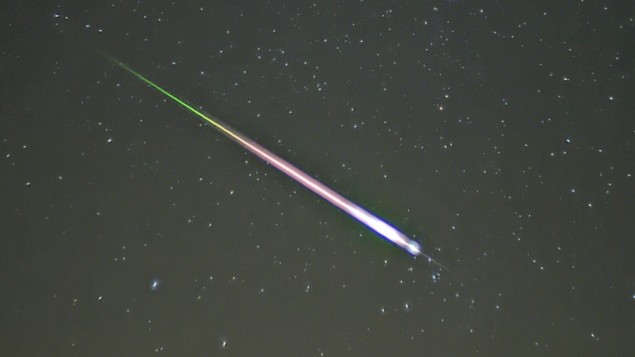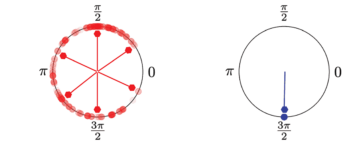
One of my favourite popular physics books is The Second Kind of Impossible: the Extraordinary Quest for a New Form of Matter by Paul Steinhardt (read my effusive review). It’s a description of the author’s successful quest to find a rare quasicrystalline material that fell from the sky and landed in the vast wilderness of eastern Siberia.
This week I am wondering if the Harvard astrophysicist Avi Loeb is also a fan of the book, because he is organizing a similar needle-in-a-haystack search for an “alien artefact” that may have fallen into the sea. Instead of mosquito-infested Siberia, The Guardian reports that Loeb and colleagues are focussing their search on the ocean around the Papua New Guinea. There in 2014, a meteorite struck Earth and further studies by NASA suggest that the object may have originated from outside of the solar system.
The two-week expedition will search for fragments of the meteorite in a ten-square-kilometre area by dragging a sled on the ocean floor at depths of up to 1.7 km. Like Steinhardt, Loeb has assembled a “dream team” to do the search – which has already been narrowed down to that particular patch of the ocean using existing data on the trajectory of the object.
Advanced alien civilization
Now, you might be wondering where Loeb thinks the object came from – and the answer is more extraordinary than the search itself. He thinks that the meteorite could be part of a space probe that was launched towards Earth by an advanced alien civilization. If this is true, he reckons that it will be made of the very strong material that may have survived its fiery descent through the atmosphere and impact in the ocean.
If Steinhardt could find tiny quasicrystals in the vast Siberian taiga, perhaps Loeb will also succeed. I wish him a bon voyage.
Staying on the theme of materials in space, researchers at the UK’s University of Manchester have created a new type of concrete that could someday be used to build homes on Mars. Dubbed StarCrete, the material comprises synthetic Martian soil combined with potato starch and salt. Apparently the material is an improvement on previous Martian concretes that used human blood as a binding agent – so good news for Martian colonists. You can read more in “StarCrete: A starch-based biocomposite for off-world construction”, which is published in Open Engineering.
- SEO Powered Content & PR Distribution. Get Amplified Today.
- Platoblockchain. Web3 Metaverse Intelligence. Knowledge Amplified. Access Here.
- Source: https://physicsworld.com/a/scouring-the-ocean-floor-for-an-alien-probe-bloodless-concrete-for-martian-homes/
- :is
- $UP
- 1
- 2014
- 7
- a
- advanced
- Agent
- alien
- already
- and
- answer
- ARE
- AREA
- around
- AS
- assembled
- At
- Atmosphere
- BE
- because
- believe
- binding
- blood
- book
- Books
- build
- by
- CAN
- colleagues
- combined
- come
- could
- created
- data
- Depths
- description
- down
- dubbed
- earth
- eastern
- existing
- extraordinary
- Fallen
- fan
- Find
- Floor
- For
- form
- from
- further
- good
- harvard
- Have
- Homes
- HTTPS
- human
- i
- image
- Impact
- impossible
- improvement
- in
- information
- instead
- issue
- IT
- ITS
- itself
- jpg
- Kind
- launched
- like
- looking
- made
- manchester
- mars
- material
- materials
- max-width
- medium
- might
- more
- Nasa
- New
- news
- object
- ocean
- Ocean Floor
- of
- on
- organizing
- originated
- outside
- part
- particular
- Patch
- Paul
- perhaps
- Physics
- plato
- Plato Data Intelligence
- PlatoData
- Popular
- previous
- probe
- published
- quest
- RARE
- Read
- Reports
- researchers
- salt
- SEA
- Search
- Second
- similar
- So
- solar
- Solar system
- someday
- Space
- strong
- studies
- succeed
- successful
- Survived
- synthetic
- system
- that
- The
- their
- theme
- Thinks
- Through
- thumbnail
- to
- towards
- trajectory
- true
- university
- Vast
- week
- which
- will
- with
- wondering
- zephyrnet











